



Lot 3051: Winchester Prototype Slide Action .30 Caliber Takedown Carbine
Daniel B. Wesson Patent Prototype Slide Action Revolving Rifle
- [


Burgess Prototype Slide Action Rifle
John Browning’s 1895 Slide-Action Prototype






Ad•16+
Play now! Chess with a computer
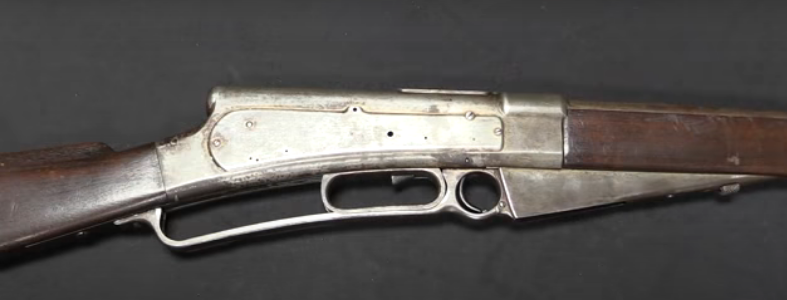
Rifle designed by Samuel McClean according to a 1898 patent. Photo forgottenweapons.com
The rifles were really quirky and weird, and worst of all, they didn’t look comfortable to shoot - especially one that required the shooter’s hand to slide inside a steel loop that resembled the lever loop of many classic lever-action rifles. Where to put the thumb of the hand, the index finger of which is to pull the trigger? It is also uncomfortable to keep fingers wedged into this steel loop. But despite this, a rifle made of metal is in front of us. This means that someone had not only the mind to figure out her drawing, but also the finances - to make it to order, because hardly any company would risk its capital for the sake of its manufacture.
The other rifle seems to be more advanced, has a knurled grip behind the trigger, but again, the design of its bolt is such that the back of the receiver and the thumb do not interact in the best way.
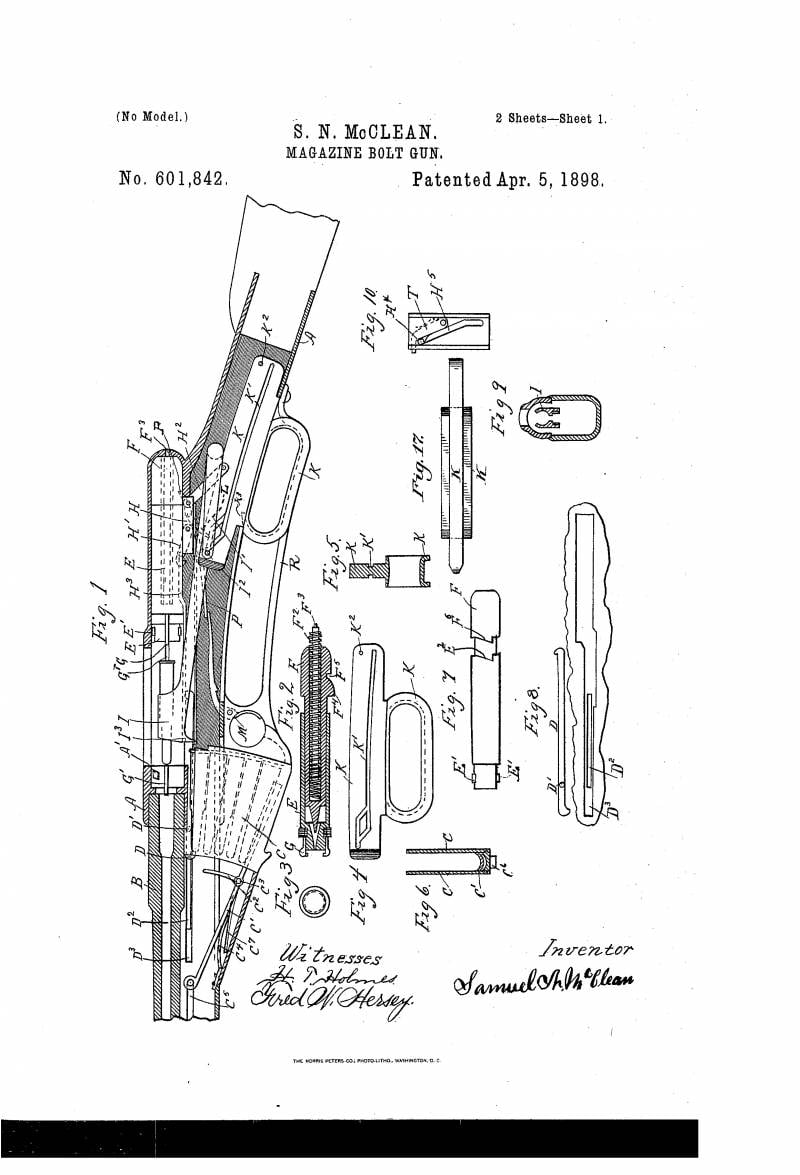
Schematic of the McClean rifle from US Patent US601842A. The main details of the mechanism
But most importantly, the “secret” of these rifles did not remain a “secret” for long. Both of these rifles were found to have been patented by Samuel McClean and were granted US Patents US601842A (April 5, 1898) and US723706A (March 24, 1903). McClean was clearly an intelligent man who enjoyed designing firearms, but his designs lacked simplicity, which may explain why they were not as widely recognized and successful as, say, John Browning’s guns. But there is no doubt that it was McClean who invented the prototype machine gun, which later turned into the well-known Lewis machine gun.
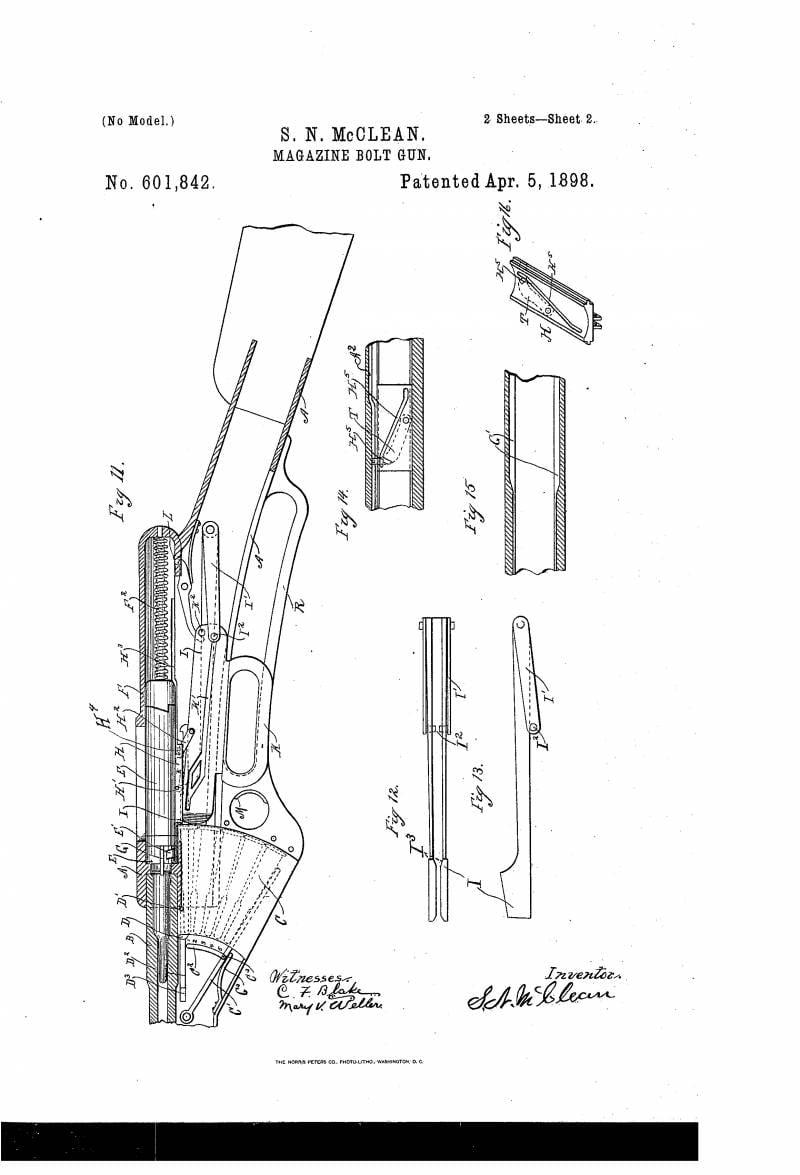
Schematic of the McClean rifle from US Patent US601842A. Cartridge feeder - fig. 12-13
It’s funny how Ian McCollum started with a 1903 rifle and then went back to an 1898 rifle. Both he described as bolt-action rifles with a rotating action with a pair of lugs on the front and upward ejection. But we will not do this and will consider them in chronological order.

Rifle McClean 1898 Photo rockislandauction.com
It is hard to imagine why McClean needed such a complex system of location, and most importantly, the supply of cartridges. Indeed, due to the fact that the store with a vertical arrangement of cartridges is located in it under the barrel, it is impossible to feed cartridges directly to the chamber. Therefore, by moving a sliding bracket with a curly groove (in the first diagram of Fig. 4) through the rod system, the cartridge is first removed from the magazine and fed back, and then enters a special feeder (Fig. 9 - the first diagram and Fig. 12-13 - the second diagram) , which, when this bracket moves forward, rises up and brings the cartridge to the chambering line.
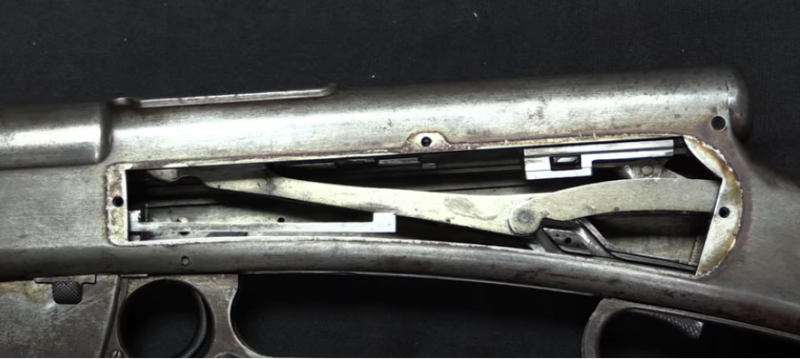
McClean rifle mechanism 1898. Photo forgottenweapons.com
The magazine lifter is described by the inventor as “very clever” as it holds the cartridge inside a pair of curved rails when loaded. As the bolt moves forward, the two halves move apart, allowing the bolt to feed a cartridge into the chamber. Everything is “simple” and elegant, and most importantly, the simultaneous supply of two cartridges is simply excluded. But at what cost has this been achieved?
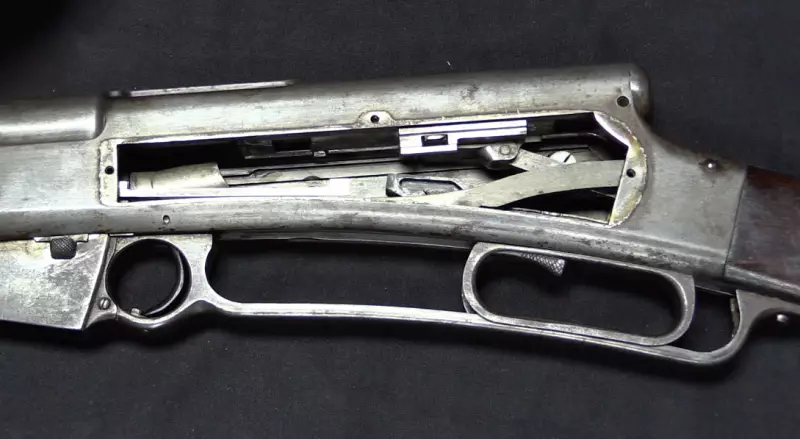
1898 McClean rifle mechanism. The bolt control handle began to move forward, and in the photo appeared (to the left above the trigger guard) a pair of curved guides, which, if this rifle was loaded, should have held the cartridge. Photo forgottenweapons.com
The most surprising thing about the design of this rifle is that for some reason its inventor did not think of equipping it with … a curved pistol grip. And let its upper part slide along the guides on the stock of the rifle. But it would be comfortable to hold it in your hands! By the way, the bolt, cocked by a pistol grip, was subsequently used on the Czech post-war machine gun vz.59 designed by Vaclav Holek.
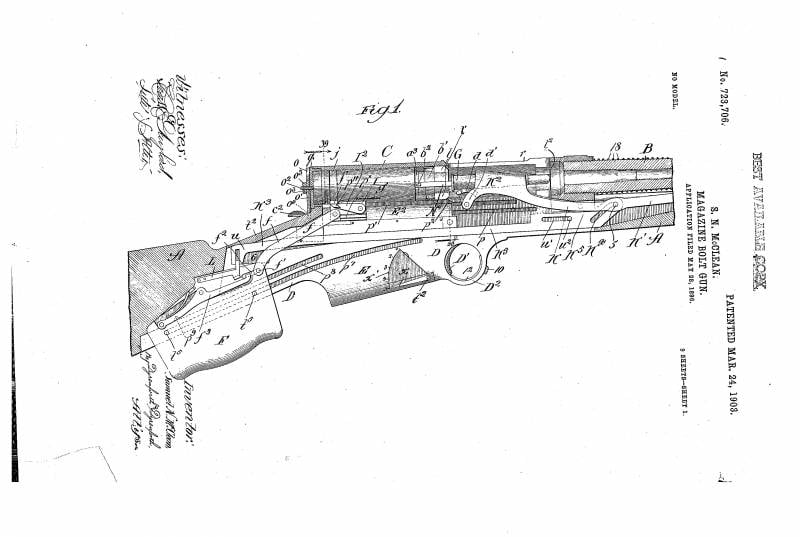
1903 McClean Rifle Movable Grip Action Diagram US723706A Patent (March 24, 1903)
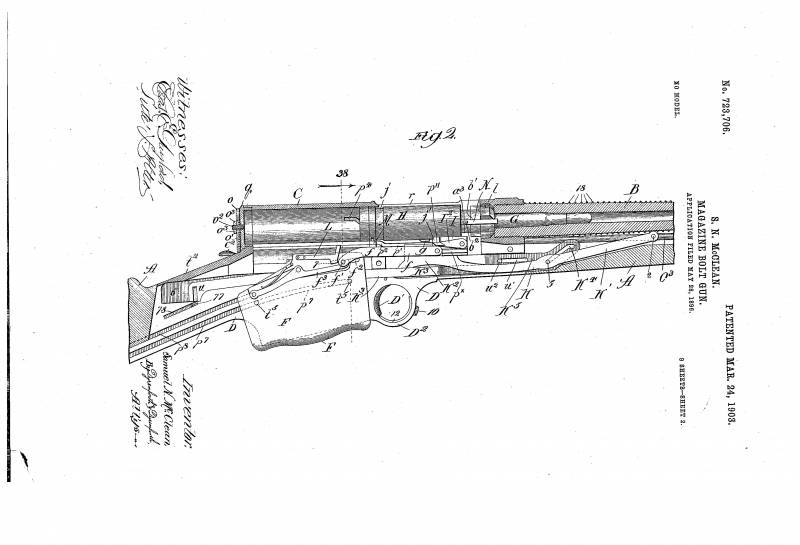
Scheme of the action of the McClean rifle 1903. The shutter control handle is moved forward until it stops
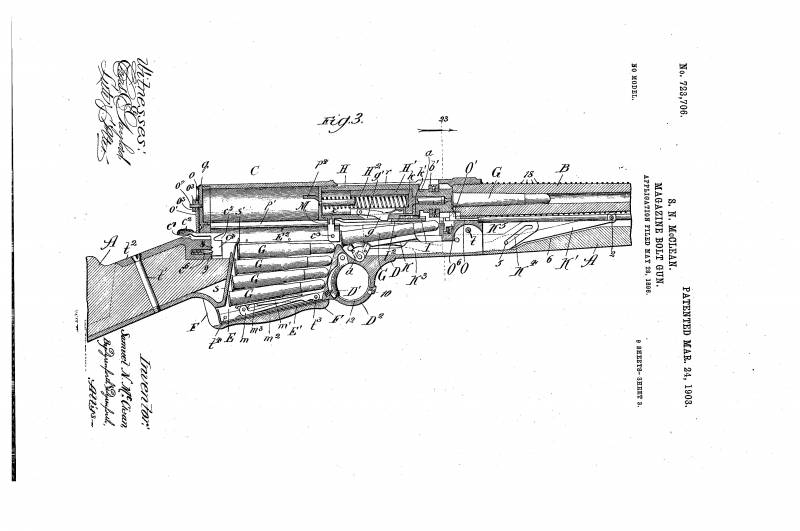
Diagram of the location and movement of cartridges in a 1903 McClean rifle
A striking feature of the 1903 rifle was the corrugated wooden handle behind the trigger guard. That is, the designer seems to have simplified the previous rifle, that is, improved it. But it only seems so. And at first glance. The fact is that the store in it is located behind the trigger guard! A wooden handle wraps around and closes it. When it is moved back to the stop, the shutter will also go back and open.
But the most interesting thing about this rifle is hidden from view. And moreover, it is quite clear that Ian McCollum did not fully disassemble this rifle, otherwise he would certainly have noticed this “zest” of it.
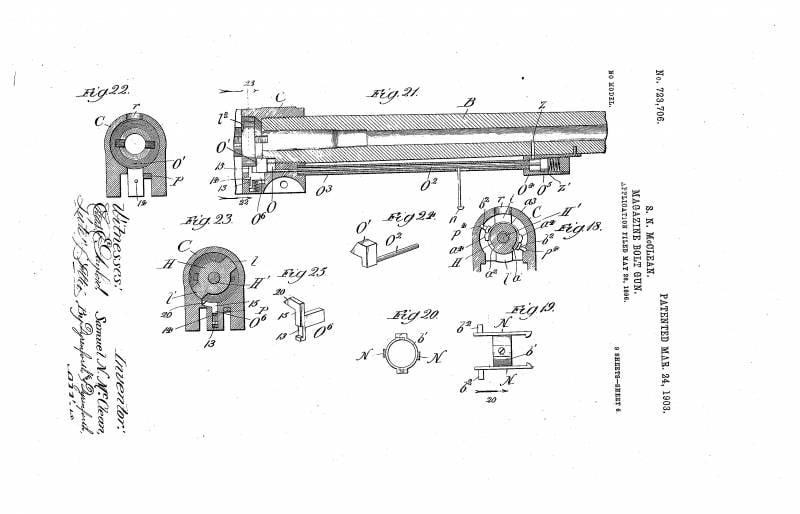
Look at page 6 of patent application US723706A. The diagram shown on it clearly shows that under the barrel of the rifle there is … a gas outlet tube with a gas chamber. So it’s an automatic rifle? But no! The description of the patent says that the purpose of the designer was “to provide means for automatically locking weapons in a loaded state and for keeping them locked until the lock is unlocked by a shot or a hand”
That is, only the shutter locking process was automated in it!
This was carried out as follows: when a bullet passed through a hole in the barrel, part of the gases entered the chamber and pressed on the piston, which moved forward, after which the gases were bled from this chamber through another hole. The piston is spring-loaded, but the location of the spring cannot be considered thoughtful, since it rests against the gas piston and can get very hot from it, and therefore settle down.
When the piston moves forward, the piston tooth (Fig. 24 - det. O) disengages from the bolt protrusions, and thus nothing prevents it from moving back when the wooden bolt control handle is twitched. That is, by itself, the shutter of this rifle cannot open in any way!
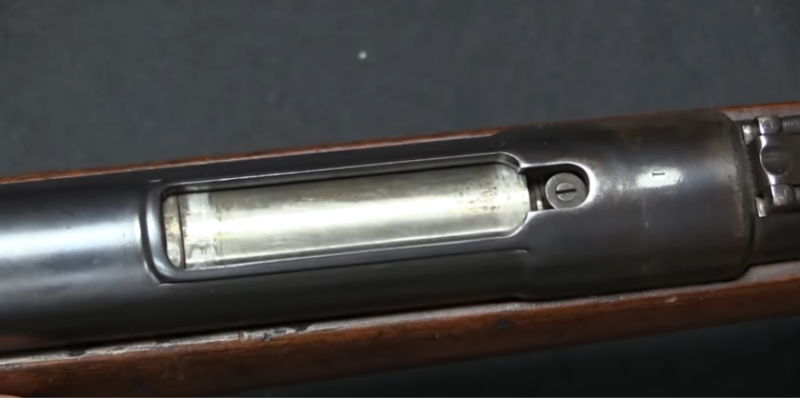
And here is how it looks in the photo in the closed state. The bolt head with two extractor teeth is stationary when closing. It fits into the narrower cut of the extraction port. Its back is turned. Photo forgottenweapons.com
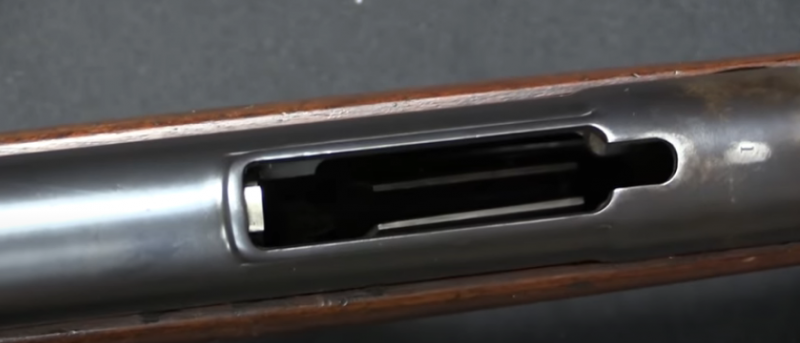
The cartridge extraction port is fully open. Two feeder guide plates are visible inside. Photo forgottenweapons.com
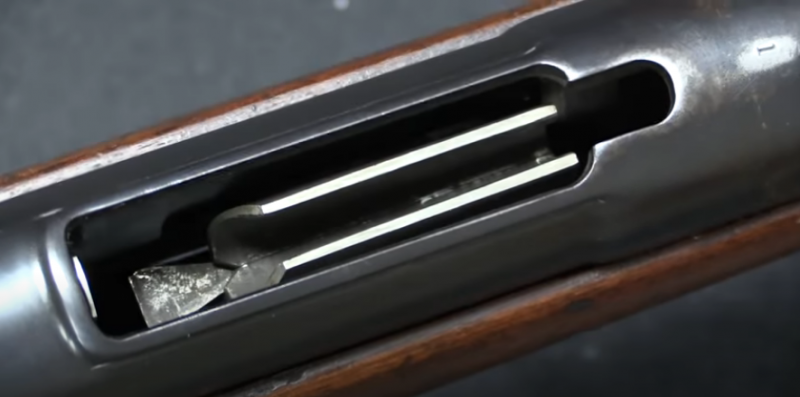
The feeder is raised to the level of sending. As the bolt moves forward, it spreads the cartridge-retaining rails, making it easy to slide a cartridge into the chamber. At the same time, the rear part of the bolt rotates and it is fixed in the receiver. Photo forgottenweapons.com
As already noted here, the inconvenience for the user was precisely in the shutter control handle. In addition, it was extremely inconvenient to load this rifle with cartridges. To do this, it was necessary to move the handle to the butt, open the magazine cover along with the feeder and spring, insert cartridges into it, and then close the magazine by sliding the cover on it.
So it really turns out that the saying “it’s hard to do very easy, but it’s just very difficult to do” is even more than true. On the other hand, like this, step by step, people came to certain technical solutions, tested them in practice and, finding them effective, began to use them more and more often. Everything too complicated was discarded, and everything effective and simple went into the treasury of all mankind!
By the way, the appearance of both of these rifles made a very strong impression on connoisseurs of rare weapons. As a result, the first rifle, being more beautiful, was sold for $12, and the previous one brought the auctioneers $650.
cool rifle but i didnt know forum are now implementing ads dam